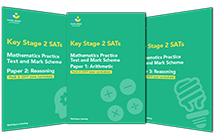Step By Step To Success In The Year 6 Maths SATs
There are no two ways about it, the Year 6 maths SATs can be difficult.
At the age of 11, children will already be facing two of the biggest challenges of their young lives. Firstly, SATs or the 11+ exams will be coming up in May (check out our Guide to SATs 2023) and after these, secondary school is looming on the horizon. It is safe to say that Year 6 can be a tense time for young minds.
At Third Space Learning, one of our key aims is to help students feel more confident with maths. We’ve taught over 60,000 children in primary schools across the UK, so we’ve had plenty of insight into what makes maths fun for children of all ages.
That’s why, to help with both exam preparation and the primary to secondary transition, we’ve put together a post that is full of advice for parents of 11-year-olds to support their child with the KS2 maths SATs, including fun maths games and activities for any Year 6 child!
So, all that’s left for you to do is to read on and discover more about the maths that is taught in the final year of primary school.
Triumphing over the tests: How to help your Year 6 child before the KS2 SATs or 11+ exams
The biggest challenge when taking the SATs (or 11+ exam) is pressure.
Many children work so hard in the weeks coming up to the exams that they lose sleep and feel anxious (which in turn, leads to worse performance on exams).
The best way to tackle this is to start early, practise often and avoid cramming at the last minute, and the result of this will be both you and your child having a much less stressful experience of the SATs.
If by the time you are reading this post it is getting a little late in the year and you’re worrying, please don’t! There’s still plenty you can do to get your child on track in time for the exams so read on to find out how!
FREE KS2 Maths SATs Practice Papers (Set of 6)
These practice papers are great for keeping your child's maths skills sharp, whether for SATs preparation or as a series of challenge questions.
Download Free Now!How to tackle SATs stress early
The beginning of Year 6 can feel rushed, and with the exams coming up in May, it’s easy to see why.
Your child’s class teacher will have planned a condensed programme of study to cover all the required skills before then, therefore the workload will be higher than in previous years.
So inevitably, you’ll also find that homework starts piling up like never before.
But, rather than letting it all build up, now is a great time to teach your child some crucial organisational skills.
Here are some simple ways you can beat that exam stress in advance:
Make a weekly plan
Have a go at drawing up a weekly schedule together when you have a quiet moment on a Sunday afternoon.
Schedule in slots for homework and revision, but make sure there’s at least one night off for some chill out time. Practising maths is important for Year 6, but time off will make them much more productive.
Next, show your child how to make a to-do list – with what’s most important or urgent at the top – that will keep the pressure off even in the toughest of times.
Invest in a few plastic folders for a simple introduction to filing work from each subject, and you’ve got a ready-made revision folder for when the exams are just around the corner.
Not only will these organisational skills stand your child in good stead at secondary school, but they’ll also give them a sense of control over what’s happening.
That’s enough to put any anxious mind at ease!
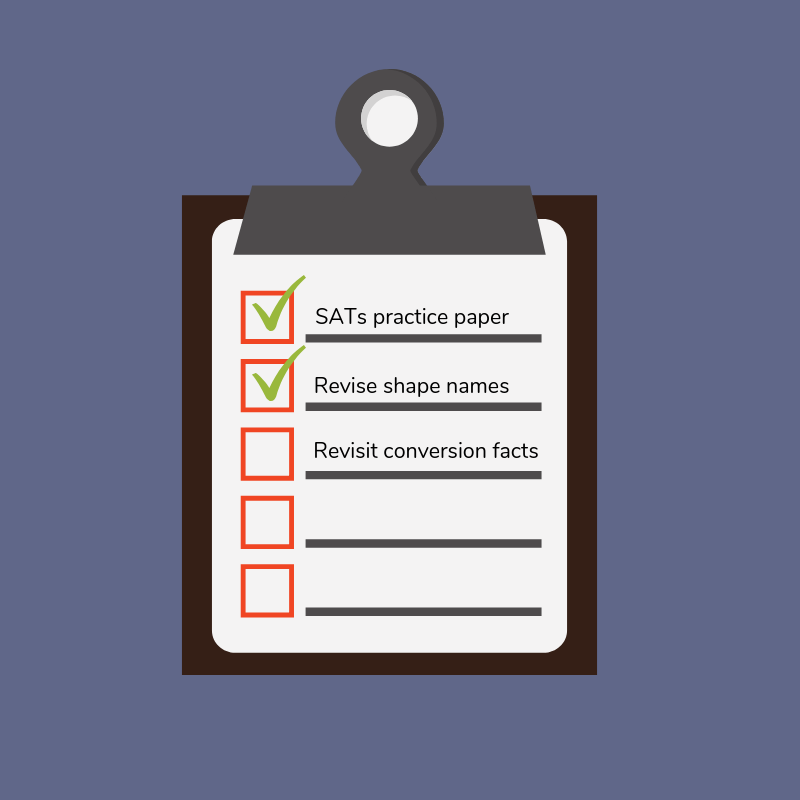
Practise test questions for SATs and 11+ exams
Chances are your child will be practising test questions at school almost daily.
However, at school, the focus will be on working these questions out independently, which leaves a lot of room for misinterpretation.
Most teachers will revisit the harder questions, but it’s a good idea to practise at home so you can identify which questions are causing headaches.
Once you know which ones are problematic, you can work on a strategy to solve them in plenty of time for the exams.
If you are looking for some SATs based maths questions for Year 5 and Year 6 children, visit the Third Space Learning Maths Hub to find a range of SATs revision packs and practice papers! You can also find additional useful activities in our list of home learning resources.
There are a lot of topics that could come up when practising maths with your child, but some prove trickier than others. Below are some ways to tackle testing topics so take a look if you need some help!
Read more: What Are SATs?
Revise basic skills with some fun maths activities for Year 6 children
Never underestimate the power of revising basic mathematical skills.
Quick arithmetic can be the difference between racing against the clock in an exam and having enough time to check over each answer thoroughly.
Whenever you can, challenge your child to do calculations in their head.
It might start out slow, but a couple of minutes of practice a day will get you both thinking on your feet and make Year 6 maths seem a lot less daunting.
If you can work it into a daily routine, even better!
Here are three simple, but fun Year 6 maths games you can incorporate into your everyday life to get those brains whirring:
1. Movie Maths
Plan to spend an evening together and choose a movie to watch. Ask your child to work out what time you’ll be done watching. You could also get them to work out how much time they have left before they need to head upstairs for bed.
E.g. The film is 1 hour and 13 minutes long. If we start watching at 18:04, and we have a 15 minute break (to get kitchen snacks!), what time will it be finished?
Your bedtime is 20:30, how long do you have before you need to go to sleep?
2. Shopping Sums
Create a shopping list and ask your child to estimate the cost of the list you’ve made. Then once you’ve bought the items – give them the receipt (with the total ripped off!) and get them to add up all the items on the list.
You can also ask them to find out the difference between their estimated total and the real total.
E.g. The total sum of the shopping was £78.90. Your estimate was £85.60. What is the difference?
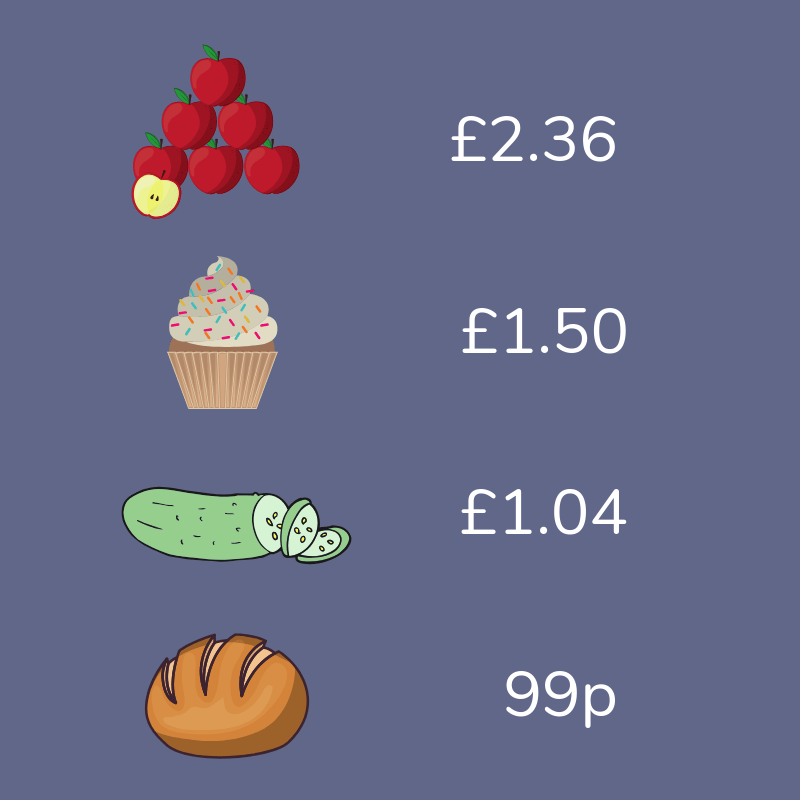
3. Reading Time
After reading a book, ask your child to work out how many pages you’ve read.
E.g. We started on page 85 and now we are on page 101 – how many pages have we read?
The book is 224 pages long – how many pages do we have left until the end?
It’s these little moments that will take the weight off when the clock is ticking during exams – plus your child probably won’t notice they’re doing maths if they’re reading their favourite book!
Year 6 maths SATs: practise test questions for the KS2 exams
The odds are your child will be practising test questions at school almost every day.
But, at school, they will be focusing on working out these questions independently, which leaves room for a lack of understanding.
Teachers may revisit the more complicated questions, but when it comes to maths for 11-year olds, it’s a good idea to practise at home so you can identify which questions are causing headaches.
Once you know which ones are causing issues, you can work on a strategy to solve them in plenty of time for the exams.
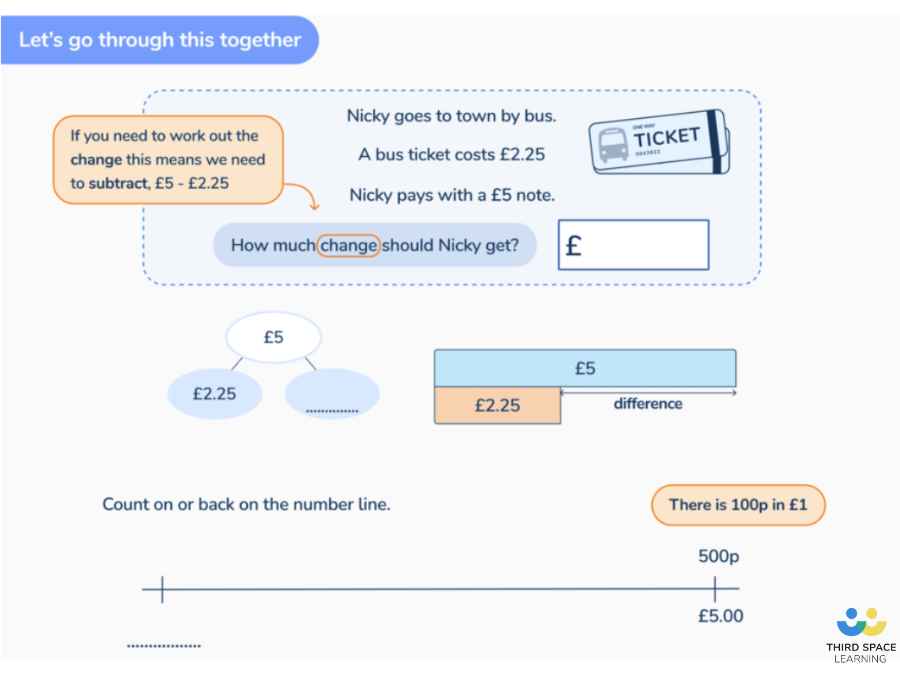
If it’s getting close to the exams and your child is still finding the test format tricky, don’t panic.
Many children (and adults!) find exams nerve-wracking, and this can affect their performance as a result.
So, keep chipping away by modelling the way that you would answer each question.
Don’t be afraid to share with your child which bits challenge you – all too often, children give up on test questions just because they’re afraid of getting it wrong. But this doesn’t mean they don’t possess the skills to get the answer!
It could be insightful to speak to your class teacher if you’re really concerned. They’ll be able to tell you what’s helping at school so you don’t have to muddle through alone.
Ultimately practice makes perfect – and builds confidence in tackling those challenging questions.
SATs advice: Introduce timed maths practice for the KS2 exams in Year 6
Although practice papers are perhaps one of the least appealing things ever invented to an eleven-year-old, it’s vitally important that your child experiences exam conditions before the real thing.
If you overdo it, you’ll end up with a seriously grumpy mathematician, but there are ways of packaging exam practice as a positive event.
Top tips for setting a serene exam scene
1. Make sure that the room your child is in is peaceful and quiet (and away from the barks of the dog!)
2. Place a few fairy lights in the room to give it a nice, calming ambience. If fairy lights are not available, then do as much as you can with your existing light source.
3. Give your child a refreshing glass of water with a slice of lemon in it – hydration is crucial when it comes to brain power. If there is a demand for a more exciting beverage coming from your child, then remind them that the water/lemon concoction is good for their brain, and it will help them with their maths!
4. Buy them some nice new stationery to make the experience a more pleasant one and reassure them that life isn’t all about exams.
5. Get them a clear timer so they get in the habit of checking the time to know how long they can dedicate to each section in their paper – and to checking afterwards.
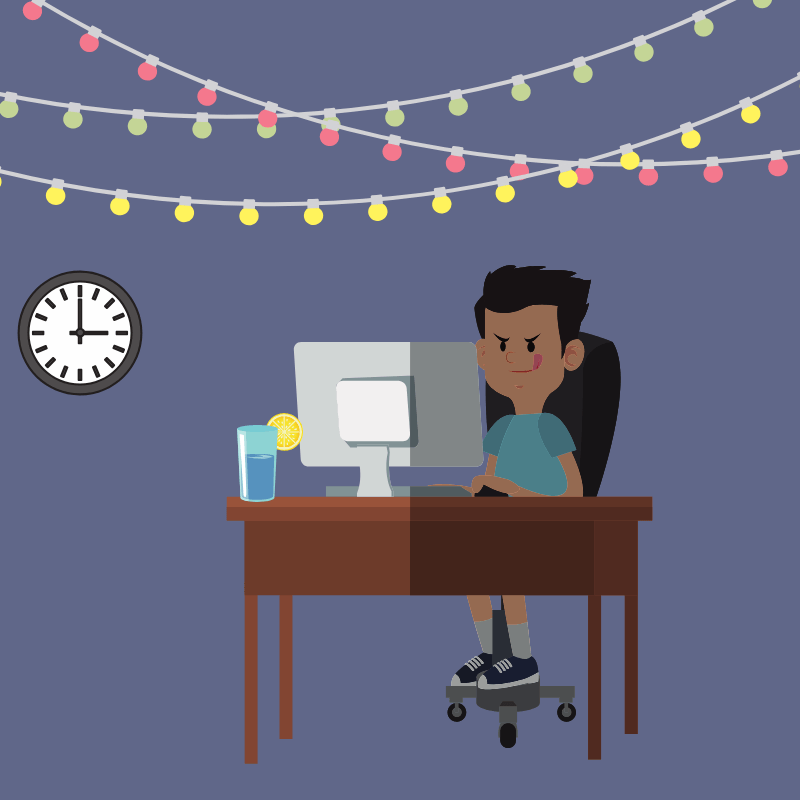
Test timings can be tricky, so don’t forget to work on them too
The key here is to help your child practise pacing their efforts.
The first couple of times your child sits a practice test, focus on helping them notice how long each question takes (you could even mark the time taken next to each one).
Don’t worry if they can’t complete the test in the time limit the first go – you can work up to this in time together!
As you practise more and more, you’ll both notice the time decreasing.
Once they’re able to finish the whole test in the time stated on the paper, you can have a go at factoring in time to check over the paper once or twice.
There’s life after SATS… How to support your Year 6 child after the KS2 exams
It’s likely that your eleven-year-old will be less than enthusiastic about the core subjects after two full-on terms of the stuff.
You both deserve a break after a long, hard slog, but there are ways to keep up the momentum (without killing off their passion for maths forever).
It’s a funny time after the exams.
Everyone in Year 6 (teachers included) is exhausted, but there’s a whole term to go before the summer holidays.
The reality of leaving primary school starts to settle in and there may be more tension in friendship groups than usual.
Keeping the routine of regular practice in maths can be an anchor for children who feel a bit out of place at this turbulent time.
A soft touch is important here though, as going overboard with maths learning can cause your child to put up barriers and not want to learn any more about maths. This is of course the last thing you want when trying to prevent the summer slide…
Maths in context: Fun Year 6 maths activities for after the KS2 SATs
Neither you nor your child is going to want to sit there and work out what happens when “Johnny has six apples, and Claire has five” after the SATs, so this means that it is time to get creative when it comes to maths.
It’s a good time to start thinking about maths in contexts other than school, so here are a few easy ideas you can try to practise maths with your 11-year-old at home!
Maths activity 1: Take maths outside
There’s plenty of outdoor activities you can do to rekindle your child’s interest in maths.
From spotting angles to active games to making shapes, the world really is your oyster when it comes to doing maths outside.
If you need some inspiration take a look at our in-depth blog on the top summer maths activities you can do together!
Maths activity 2: What will I be when I grow up…?
Why not take a look at which careers require great maths skills to get your child interested in how maths really works?
Rollercoaster engineers, game designers and jet fighter pilots all require maths everyday, and the list is endless!
Have a go at researching all the exciting jobs that need maths and your child will soon see that maths is more friend than foe!
This will also give them a reason to stay motivated through those tricky topics at secondary school.
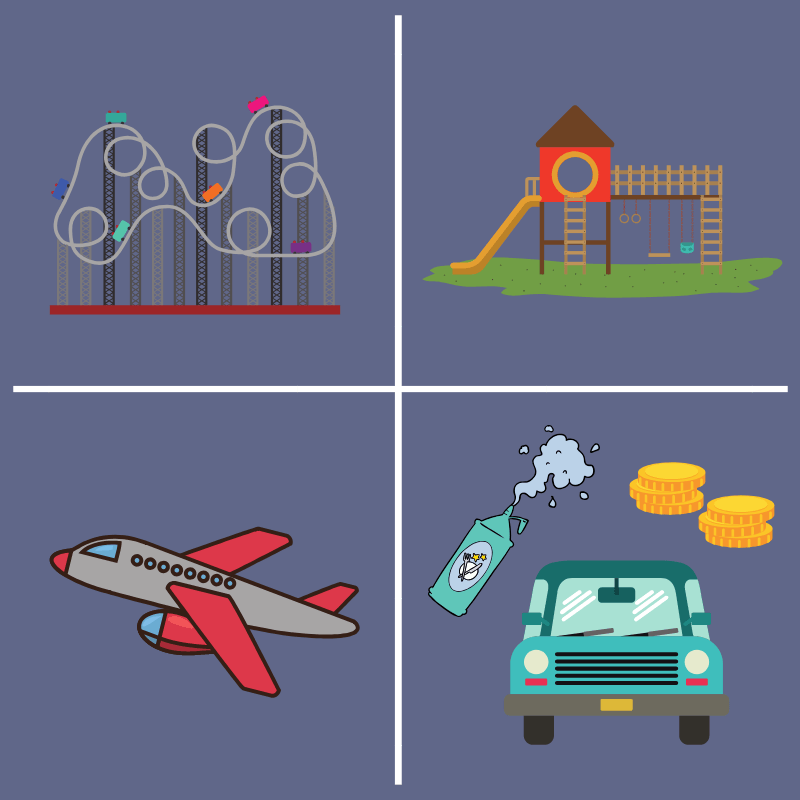
Maths activity 3: Tool time
It’s incredibly useful at this age to introduce some of the tools needed for maths in the workplace, such as digital spreadsheets.
Your child will encounter these in secondary school, and the more practise they get, the better.
If you’re not too sure about spreadsheets yourself, make it a learning journey that you take together.
A simple start could be to track how your mood changes when you drink more water (something that will benefit both of you).
Maths activity 4: Awaken your child’s inner entrepreneur
Now is the time to awaken your child’s inner entrepreneur!
Plan a project to complete over the summer holiday; challenge your child to raise as much money as possible through a business idea of their own.
This could be anything! Whether they’re washing cars for neighbours or building an online platform for fans of flossing, make sure you supervise what they’re doing and give help where necessary.
There are plenty of books out there for budding child entrepreneurs and plenty of inspirational examples, and all it will take is a quick Google search.
Plus, in many projects children will have to handle money, and money management skills can provide a wonderful way to add purpose to decimal work.
You’re also providing your child with the skills and confidence to handle their accounts later in life, something which is strangely not taught in schools at the moment.
Maths for 11-year-olds at secondary school: start early!
Once secondary school starts and the workload ramps up, there’ll be less time to revisit the basics of written calculation.
So make sure you revise the formal written methods for addition, subtraction, multiplication and division now when you have the time, to avoid headaches later on.
It’s valuable to focus on presenting work neatly so that mistakes are easier to catch. (And presentations crop up often at secondary school!)
You’ll find that long division tends to cause the most trouble, so it’s worth making time for that regular practice.
Bringing the scientific calculator into the equation(s)
As the numbers get bigger and bigger, your child will spend more and more time using a calculator – and a scientific one at that.
After years of using a simple calculator at primary school, it’s more advanced counterpart might look like an alien device.
But don’t fear – experiment together!
Have a go at this easy task to help your 11-year-old get to grips with a scientific calculator in a fun way:
Fun maths activity: Spot the scientific symbol
Step 1: Take it in turns to guess what a button does before looking it up.
E.g.: ”I think this means you multiply the number by itself because the little 2 makes it look like a square number.”
Step 2: Talk about how you came up with your guess. It might not be correct (and the answer might be too high level right now), but that’s okay!
Step 3: Repeat! Whoever gets to 5 correct answers first gets a reward of your choosing!
This fun exercise will help your child to develop their problem-solving skills in the face of unfamiliar symbols and processes.
Year 6 maths: How to challenge and push them at home
One of the first unfamiliar topics that your child will face at secondary school is algebra.
And with all those letters and symbols, it’s easy to see why many children feel overwhelmed.
Algebra doesn’t follow the same notation as basic primary school maths, so it’s worth revising what each symbol means when dealing with these kinds of problems.
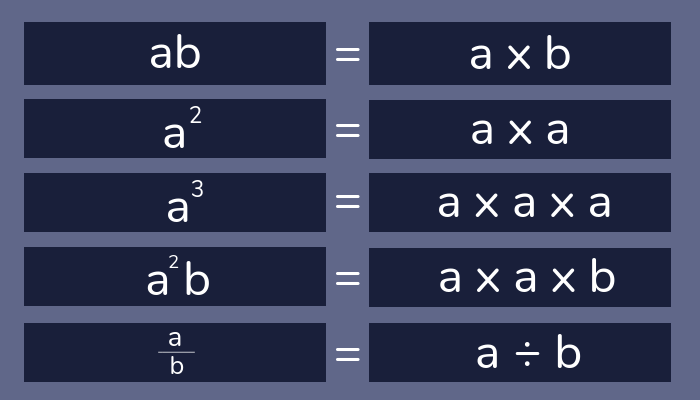
You might even want to take a look at the order of operations in algebra, but we only recommend this for mathematicians that feel ready to look at numbers with powers and square roots.
Otherwise, just learning the notation will put them a step ahead.
Although back when we were at school algebra might have been a mysterious subject, the emphasis on deep understanding these days means that most schools teach algebra with more reference to its uses and concrete examples.
You might also hear more about balancing out the side of the equation (which is a much simpler concept than just memorising the steps to solve it).
Whenever you get the chance, ask your child to explain what they learned about more complex maths topics on the day that they learned them – this is hugely helpful for retention and gives your child a reason to remember all those complicated ideas.
Related Articles:
How to help my child with maths at home
DO YOU HAVE STUDENTS WHO NEED MORE SUPPORT IN MATHS?
Every week Third Space Learning’s maths specialist tutors support thousands of students across hundreds of schools with weekly one to one tuition designed to plug gaps and boost progress.
Since 2013 these personalised one to one lessons have helped over 150,000 primary and secondary students become more confident, able mathematicians.
Learn how pupils make accelerated progress or request a personalised quote for your school to speak to us about your school’s needs and how we can help.

